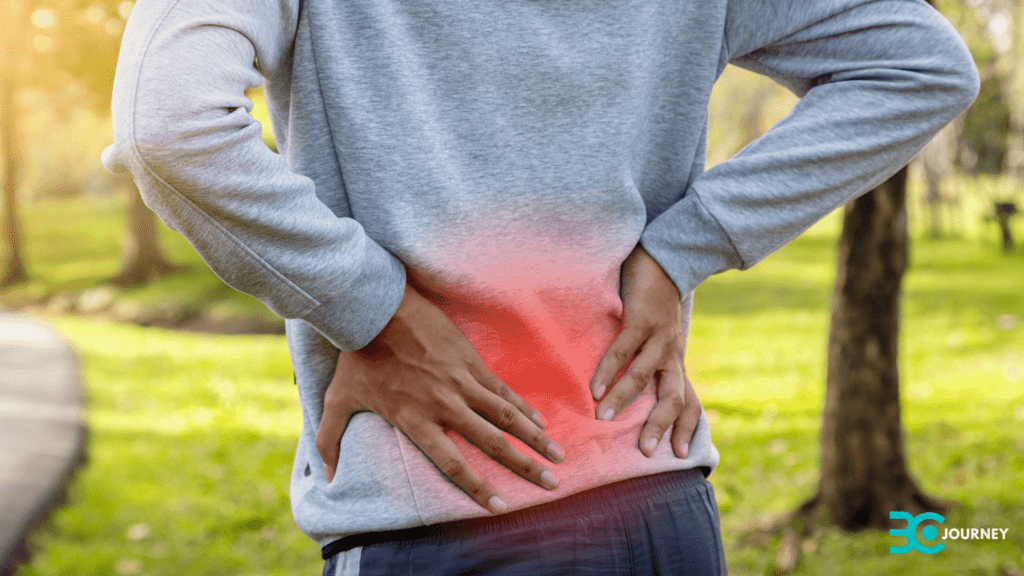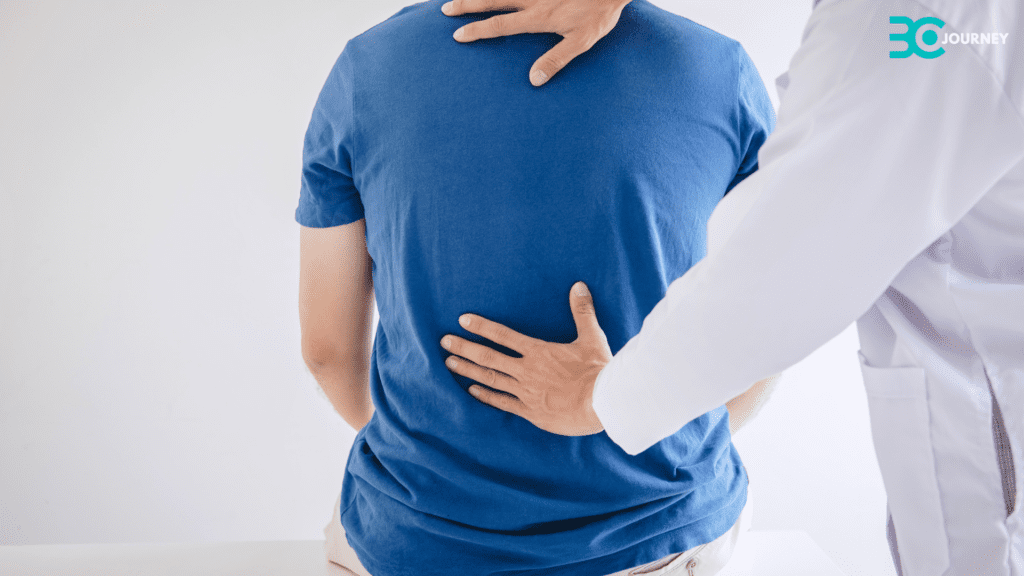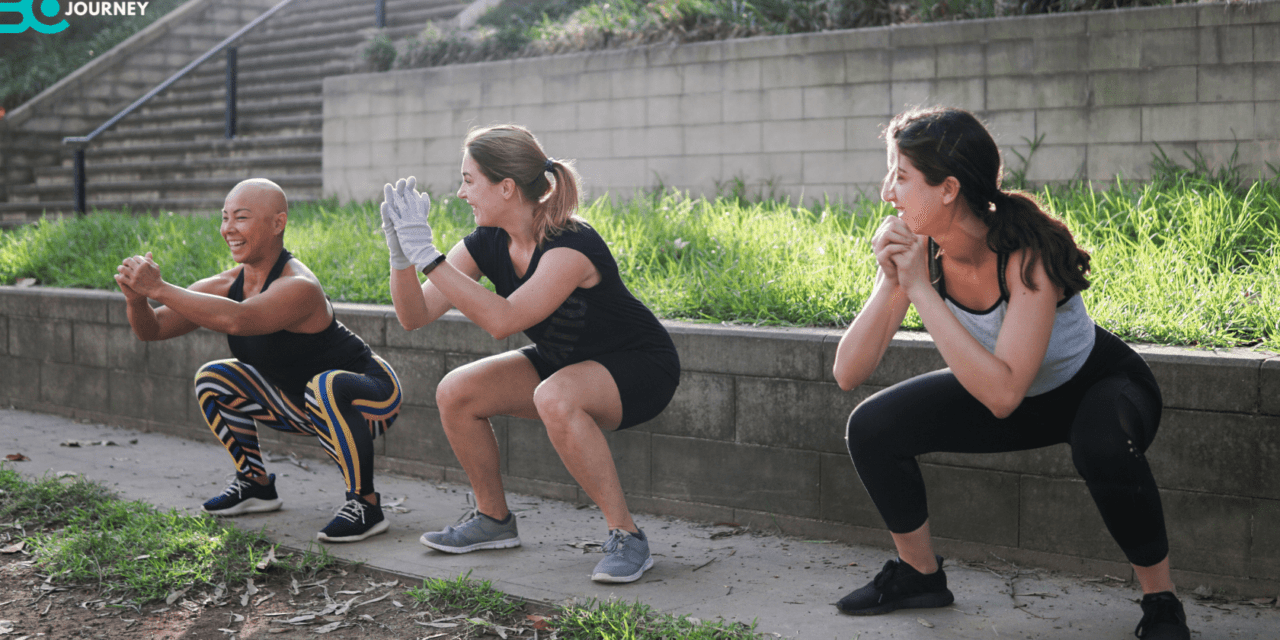Lower back pain from squats is a common problem for those who frequently perform squats. Legs are the lower body’s muscles, so squats are good for strengthening and building them up. But with incorrect form or overloading, it’s easy to overexert one’s lower back muscles and bring on the ache
There is reason to be hopeful. Lower back pain from squats is preventable or can be remedied. This manual will focus on the likely causes of lower back pain during squats and what you can do to overcome them.
Causes of Lower Back Pain after Squats
- Poor Form: mistakes for low back soreness. The biggest one is poor posture when you squat or bend over rows. This can include straightening or rounding the back, not pressing into one’s core muscles correctly, and slumping very far in front with a hanging out belly. As long as they are correctly done, keeping the natural curve of your spine and using strong Stomach or midriff muscles to support the entire abdomen is vital.
- Not Warming Up Enough: Not Warming Up sufficiently can also cause discomfort in your lower back from doing squats. Warming up helps relax the muscles and prepares them for movement, increasing blood circulation by bringing more nutrients to any parts of your body that need them (e.g., the lower back muscles used in a squat) and removing waste products from those areas.
- Overloading: Excessive weights will strain small muscles in the lower back (through squatting), leading to muscle failure and pain in this region. Yet more excellent pull-up Resistance is essential initially unless you want a line of tears or some Hold soreness instead, but gradually strengthening your abdominals should make that possible Before you move to weights.
- Lack of Mobility: restricted movement at the hip, ankle, or pain can once again lead to lower back soreness during squats. If the proper range of motion is not allowed in these areas, the lower back will take over any work they cannot do themselves.
- Poor Core Strength: Weak core muscles can also affect your lower back during squats. Your stomach muscles stabilize the spine and support those upward movements involved in this exercise.
- Several: If you’ve had an episode of accurate lower back irritations, begin cautiously when doing squats. Prior injuries could mean that the lower back is less stout and more susceptible to injuries, necessitating some modification or extra assistance while squatting.
- Fatigue: Fatigue can also play a role in lower back pain. When tired, muscles will not be able to support the spine properly, and this causes stress on that area of one’s body, leading to aches or pains in places where there shouldn’t be any.
- Incorrect Bar Placement: Underneath of the scapolite, one may Find bar placing too high on the back or off-kilter padding leads to lower back pain during adducts, whereas if Optional padding is added to retain proper sclera.
- Foot Position: The wrong foot position can cause lower back pain during squats. Feet should be about shoulder width apart, with toes pointed slightly outward for good balance and stability.
Tips for Preventing and Fixing Sore Lower Back from Squats

1. Focus on Form: Focusing on form is the most crucial thing in preventing and relieving lower back pain from squats. Make sure that you keep a neutral spine while lifting a weight, maintain your core muscles engaged, and do not lean too far forward or bend your back in any way.
2. Warm-up Properly: Always warm up before doing any squats. This can include stretching, using a foam roller, or engaging in light cardio work to raise the blood flow and limber muscles.
3. Gradually Increase Weight: It is essential to begin with a manageable weight when squatting and then gradually increase it over time. Going up in weight too fast can strain the lower back muscles excessively.
4. Improve Mobility: Exercising and stretching to improve hip, ankle, and spinal mobility can prevent lower back pain during squatting. This might include moves like lunges, glute bridges, or spinal twists.
5. Strengthen Core Muscles: Weak core muscles may contribute to lower back pain during squats. Adding exercises that strengthen the core, such as planks and Russian twists, can support your spine while squatting.
6. Modify the Exercise: If you have a history of lower back injuries or feel pain during squats, it may be necessary to modify the exercise. This could mean using lighter weights, adjusting your foot positioning and bar placement, or doing alternative exercises altogether.
7. Rest and Recover: It is essential to listen to your body and take rest days when necessary. Exhaustion can contribute to lower back pain during squats, so ensure that the muscles that help support your spine have time to recover between workouts.
What are the protocols for Lower Back pain from squats?
There’s no one-size-fits-all protocol for lower back pain from squats since different people have different levels of strength and mobility and varied fitness goals. However, some general guidelines should ensure safe and effective squatting:
Dynamic stretching: Dynamic stretches include leg swings, hip circles, or body weight squats to warm the muscles and prepare them to move.
Mobility drills: Mobility drills that focus on hip, ankle, and spine movement are necessary to improve the range of motion available for squats.
Form check: Have a monitor or experienced side check your form to ensure proper alignment and technique.
Proper warm-up: Starting with lighter weights and gradually increasing over time is essential. This will help avoid injury.
Listen to your body. When doing squats, listen to your body if you feel soreness or pain. Avoid further injury by pushing through pain. It may be counterproductive.
Remedies and Treatments If back hurts after squats

What if you do feel lower back pain as a result of squatting? We’re going to offer remedies and treatment methods that can help alleviate pain and speed up healing in the following three areas:
Rest: Do not do too much exercise too quickly. For mild pain, take a break from squatting for a couple of days so that your muscles may rejuvenate themselves.
Ice or Heat: Apply either one to the part of your back that aches. This will reduce swelling and provide relief for some strange reason. When first injured, ice may be more effective; however, after that, it is better to apply heat.
Stretching: Use gentle stretch exercises like the child’s pose or the cat’s back. This lessens strain on lower back muscles and may ease tightness in the muscles surrounding your inner thigh joint, making your hip flexors very painful.
Massage: A treatment with somebody specializing in lower back pain who has experience providing massages can loosen up muscle tension and increase circulation around the affected area.
Over-the-counter medication: Anti-inflammatory medication/analgesics such as ibuprofen or aspirin may help reduce pain and inflammation in the lower back.
Physical therapy: If the pain remains, consider seeing a physical therapist. They can offer exercises and methods to address any underlying problems related to lower back pain during squats.
Proper Nutrition: Eating a healthy diet with plenty of beneficial nutrients to the muscles, like protein and good fats, can contribute to recovery from lower back pain stemming from squats.
When should you seek medical help with lower back pain after squats?
If lower back pain after squats is expected and, indeed, the correct length with proper resting and self-massage, medical attention could sometimes be required. This includes:
• Severe or constant pain: If the pain is severe and does not get better with resting and self-massage, it is essential to see a doctor.
• Pain radiating down the legs may point to a more severe problem, such as herniation of a disc and pinching nerves.
• Loss of control of the bladder or bowels arises when the cauda equines the bundle of nerves at the end of your spinal cord—suffers a severe physical problem and demands immediate medical attention.
Final Thoughts
If you have any of these symptoms, it is essential to get help right away. Otherwise, we continue happily squatting free of lower back pain by following the correct form, warming up properly, and increasing slowly. Listen to your body, adjust the exercise if necessary, and prioritize safety over pushing through discomfort or pain. With these tips, you can safely and effectively include squats in your fitness routine. Finally, remember that everyone is different, so you must find what works best for you and consult a healthcare professional if you have any concerns or persistent pain. Keep squatting strong!


Trackbacks/Pingbacks